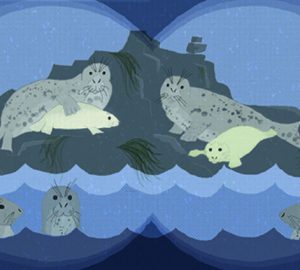
In praise of masters swimming
Don’t worry, we’re not planning to drop open water swimming and return to the confines of the pool, but with our next issue we’ll be publishing a supplement about masters swimming, which is the slightly intimidating description for people over the age of 25 who swim in a club environment (and in practice, it also includes anyone over the age of 18). It has nothing to do with being an ex-elite swimmer nor are masters swimmers necessarily fast, but the term is sometimes misunderstood.
We’ve decided to publish the supplement because (1) masters swimming is an exciting and healthy activity in its own right and (2) there’s a great cross-over between masters and open water swimming.
Not so long ago, masters swimming was primarily the realm of people who had swum competitively as kids and continued swimming as adults because they loved it, found it a convenient way to keep fit and enjoyed the occasional competition.
These people still dominate the fast lanes at training sessions but they are no longer the only ones in the club. Open water swimmers, triathletes and recreational swimmers are seeing the benefits of swimming in a structured environment and are signing up, and clubs are adapting to meet the needs of people who arrive without being able to swim all four competitive strokes or have any idea how to use a pace clock.
If you are looking to improve your swimming then, as well as reading H2Open Magazine, we’d recommend checking out your local masters swimming group. Not all clubs are equal and some will be more welcoming and accommodating that others so it may pay to look around if you’re lucky enough to have more than one within reach. Depending on your level it may be worth taking a few one-to-one lessons first to boost your confidence. Ideally you should be able to swim front crawl, backstroke and breaststroke, and be willing to have a go at butterfly from time to time – but this isn’t essential. You will find masters clubs have plenty of people who don’t swim one or more strokes for various reasons – injuries (e.g. knees that stop you swimming breaststroke) or just lack of interest. The big benefits of joining a club are swimming in lanes with people of similar speeds who understand lane etiquette (and therefore avoiding the lane rage that can occur if you try to train in a public session) and the expertise of a coach.
You may also find other people with an interest in open water swimming – or you may be able to convert a few. Many dedicated pool swimmers have odd ideas about open water swimming and have yet to experience the joys of swimming outside. Even while they fly up and down the lanes they will be impressed by your tolerance of cold, stamina and your sense of adventure. It may be hard work to convince them to join you in your local lake or river but once you get them outside they will almost certainly thank you.








